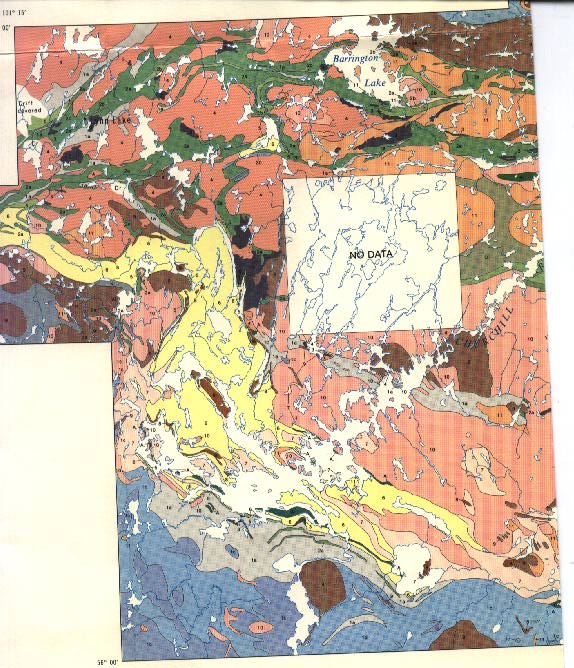Mining in Manitoba
Geology of the Lynn Lake Area
GEOLOGY
 |
Five subdivisions in the consolidated rocks can be found in this area. The Wasekwan series of volcanic and sedimentary rocks are the oldest. The pre-Sickle intrusive group which varies from gabbro, norite, and periodotite to granite, invades the folded and schistose Wasekwan. The Sickle series of sedimentary rocks lies unconformably upon the pre-Sickle intrusions and other older rocks. The post-Sickle intrusive rocks invade the folded Sickle series. The Kisseynew-type gneisses derived by high-grade metamorphism of the Sickle series also contain some altered Wasekwan rocks. |
The structure of the Wasekan series is obscure. The structure is complex and the folding has been intense. The Lynn Lake gabbro is widely distributed as bodies of appreciable size. The original rocks have been strongly uralitized; small remanents of pyroxene can be observed. Post-Sickle intrusions of mafic rock are not common.
The rocks of the Lynn Lake are all of Precambrian age and lie in the Churchill Province. Absolute ages by A/K methods, indicate that the rocks from the Lynn Lake area is 1.74B years for a sedimentary gneiss of the Wasekwan series and 1.64B years for Pre-Sickle granites. Correlation of the volcanic and sedimentary rocks suggests that on a broad regional basis, the Sickle series should be correlated with the Missi series of Flin Flon and the Wasekwan with the Amisk series of Flin Flon and elsewhere.
MINERAL DEPOSITS
Evidence supporting a hydrothermal origin of the ore deposits is absent and evidence pointing to the development of Ni-Cu deposits by crystallization from an immiscible sulphide liquid within the gabbro. Main points supporting this theory :
1) Orebodies occur entirely confined within differentiated mafic intrusions ,
2) Known orebodies occur in the lower part of the gabbroic complex,
3) Sulphides crystallized under hi-temp anhydrous conditions,
4) Composition, partial oxygen pressure, and cooling history favour an immiscible sulphide liquid,
5) Same mineral assemblage as magmatic segregates,
6) Composition suggests crystallization initially as a pyrrhotite solid solution which exsolved pentlandite and chalcopyrite.